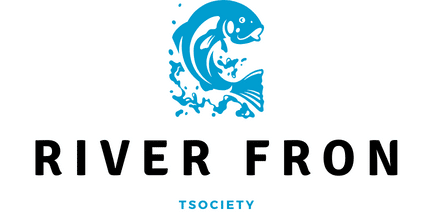How Are Dynamic 3D Projection Mapping Technologies Changing Live Performances?

In the last decade, live performances have been revolutionized with the advent of innovative technologies. Among them, projection mapping has emerged as a game-changer. With its ability to create immersive and interactive experiences, it has breathed new life into events, from music concerts and theater performances to corporate presentations and product launches. This article will delve into how 3D projection mapping is reshaping the live event industry.
Transforming Ordinary Surfaces into Visual Masterpieces
The essence of projection mapping lies in its ability to turn ordinary objects and surfaces into mesmerizing visual displays. Whether it’s a building facade, a stage set, or an indoor wall, the technology can morph them into anything imaginable, thanks to the advanced video and LED displays.
Also read : Unlock surprises: the allure of mystery box deutschland
Projection mapping starts by creating a virtual copy of the physical object or space onto which the content will be projected. This digital model serves as a mapping surface for the projected content. Then, designers use specialized software to create the content. This could range from shapeshifting 3D animations, intricate light patterns, to realistic scenes that interact with the structure’s features. The content is then projected onto the real-world object, creating a seamless fusion of physical and digital elements.
Such a visual spectacle not only captivates the audience but also enhances the theme or narrative of the performance. Each show becomes a unique, immersive experience, allowing guests to feel part of the event rather than just spectators.
Have you seen this : Unlock professional videos with 300 easy-to-use templates
Enriching the Audience Experience through Interactivity
Another noteworthy aspect of projection mapping is its interactive capabilities. Technological advancements have made it possible to create dynamic, responsive content that reacts in real-time to the audience, performers, or the environment.
Interactivity brings a whole new level of engagement to live events. It invites the audience to become active participants, transforming their role from passive observers to co-creators of the experience. Interactive projection mapping can be as simple as content that reacts to sound or movement or as complex as systems that respond to multiple stimuli and sensors.
For instance, during a concert, the visuals on the stage could pulse and change in sync with the music and the crowd’s reactions. At an exhibition, a wall could morph its visuals as visitors move around, giving them a personalized tour. Interactive elements not only add a wow factor but also help to create a deeper connection between the performance and the audience, making the event a memorable one.
Streamlining Production and Design Process
The world of events and live productions is often characterized by tight deadlines and even tighter budgets. However, projection mapping provides an efficient and cost-effective solution to these challenges.
Traditionally, creating elaborate stage sets or visual installations involve significant time, resources, and logistical planning. In contrast, projection mapping requires mainly software design work, which can be done remotely and edited in real time. This flexibility allows event planners to experiment and tweak their designs up to the last minute, ensuring that the final result is exactly as envisioned.
Moreover, projection mapping eliminates the need for physical props and decorations, reducing the event’s environmental footprint. It offers a sustainable alternative to traditional event staging, aligning with the growing demand for eco-friendly practices in the industry.
Revolutionizing Various Types of Events
From corporate events to music festivals, from fashion shows to product launches, projection mapping has found its place in a wide array of live events.
In corporate settings, it helps to create powerful presentations and demonstrations, adding a visual punch to data and messages. At music concerts, it elevates the performance by syncing visuals to the rhythm and mood of the songs. In the world of theater, it breathes life into the narrative, creating realistic backdrops and effects.
More recently, projection mapping has entered the realm of retail and product launches. Brands are using it to create impactful product presentations and store displays that grab attention and provide immersive experiences to customers.
Conclusion
In conclusion, 3D projection mapping technology is undoubtedly revolutionizing the realm of live performances. It’s not just about adding a visual layer to an event; it’s about creating an immersive, interactive, and impactful experience that engages the audience in unprecedented ways. As technology continues to evolve, it will be exciting to see how projection mapping continues to redefine the live event landscape.
The Vital Role of Cutting-Edge Software in Projection Mapping
The heart of projection mapping technology lies in the mapping software. This software is responsible for the creation of the 3D models, designing the visuals, and coordinating the projection onto the physical world. The richness and variety of visuals that can be created are only limited by the designer’s imagination.
The software begins by creating a virtual model of the physical object or environment. This involves taking precise measurements of the object and its surroundings, and then using this data to create an accurate 3D model.
Following this, designers use the software to create the content that will be projected. This could involve designing complex, moving 3D images, creating intricate light patterns, or even creating a realistic, interactive environment that responds to the viewers and their actions.
The software also orchestrates the actual projection, aligning the virtual visuals with the physical object or environment. This involves complex calculations to ensure that the projection fits perfectly onto the object, creating a seamless blend of the physical and the digital.
Due to its flexibility and real-time adaptability, projection mapping software has become an indispensable tool in the event production industry. Whether it’s for a music concert, a corporate presentation, or a product launch, mapping software allows event planners to create awe-inspiring, immersive experiences with relative ease and efficiency.
The Future of Projection Mapping in Live Performances
Projection mapping technology has already made its mark in live performances, and its influence is only set to grow in the future. With each passing year, this technology is becoming more sophisticated, offering ever-increasing possibilities for creating immersive, interactive experiences that captivate audiences.
Future advancements in this technology could potentially include greater interactive capabilities, with content that can respond in real time to a wider range of stimuli. Imagine attending a concert where the visuals react not just to the music, but to the audience’s collective mood, the temperature, or even the time of day.
Moreover, as virtual reality (VR) and augmented reality (AR) technologies continue to evolve, they could potentially be integrated with projection mapping to create even more immersive experiences. This could include VR performances where the audience can interact with the performance in a virtual space, or AR performances where digital elements are overlaid onto the physical world in real time.
As projection mapping technology continues to advance, we can expect to see it increasingly used in a wide variety of live events, from music concerts and theater performances to corporate presentations and product launches. It’s a truly exciting time for the live performance industry, with projection mapping set to redefine the boundaries of what’s possible.
Conclusion
Projection mapping has undoubtedly transformed the way we experience live performances. It has opened up a world of possibilities, enabling us to create and experience events in ways that were previously unimaginable. Through the use of advanced hardware and software, ordinary surfaces can be transformed into extraordinary visual displays, creating immersive, interactive experiences that captivate audiences.
As we look to the future, the potential of projection mapping is limitless. With advancements in technology and a growing demand for more immersive, interactive experiences, it’s clear that projection mapping will continue to play a pivotal role in shaping the live event industry.
The world of live performances is on the brink of a new era, one that promises to be more engaging, more immersive, and more visually stunning than ever before. As we continue to push the boundaries of what’s possible with projection mapping, one thing is clear: the future of live performances is bright, and it’s projected in 3D.
